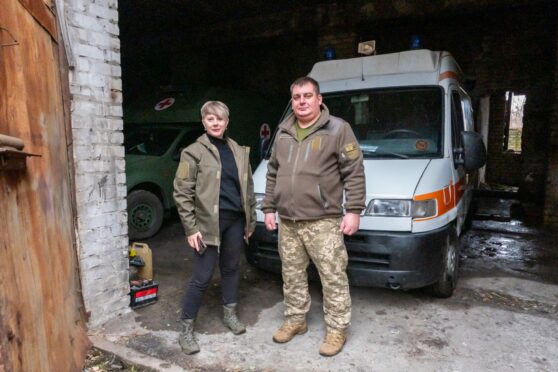
Frontline medics think in terms of zones. In the Red Zone, you want to get the hell out as quickly as possible.
This is fast, improvised first aid – stop the bleeding, keep them breathing – with tourniquets, bandages, splints or whatever’s to hand. A little further back from the firing line, in the Yellow Zone, you can stop and evaluate the casualty. Green Zone is “safe”. Relatively speaking.
Somewhere in the Yellow Zone, in eastern Ukraine, we bump along a dirt track in a minivan with Zhenya, a 36-year-old medic; he’s a major in this division. The road seems endless, winding through half-deserted villages and farmland, the flat land of Donbas stretching out, infinite, in every direction. I’m trying to imagine the difficulty of getting a casualty out, down these long pitted tracks in an old car or a van. Surely it would take forever?
The big man shrugs. There’s not much choice. “We try not to use helicopters for evacuation,” he explains. It’s just far too dangerous to fly in this area. Anything airborne quickly becomes a target.
Serious cases are evacuated by train, taken to the big cities: Dnipro, Kyiv, even distant Lviv. As the first minutes after injury are the most critical, much of the medics’ work is teaching soldiers basic first aid. If someone knows how – and when – to apply a tourniquet to themselves, they might lose the limb, but they won’t bleed out.
The frontline hasn’t moved much here since the full-scale invasion of February. A few miles to the east is Donetsk, a major city taken by Russian-backed forces in 2014. Moscow has since annexed that territory, and bombards the Ukrainian side with artillery in an attempt to claim more of what it calls the “Donetsk People’s Republic”. Ukraine is determined to take it all back.
“The most difficult time here was the first few weeks,” says Bohdan, 29. He and his team are the local version of air defence: they have a huge Wasp surface-to-air missile system hidden under branches and canvas. It can take down everything from attack drones to helicopters, but the missiles are used sparingly – stockpiles of these Soviet-era weapons are dwindling.
Back in March “no one knew what would happen, the frontline was changing every day,” Bohdan recalls. It was a struggle – psychologically as well as physically. Now though, they feel confident. The rocket-launcher has a success rate of about 50% and it takes them just a few minutes to set the target and fire. The problem is that the defence system is a main target for Russians. Firing it gives away the location, so they have to pack up and move straight after the Wasp has stung.
Not today though: it’s cloudy. No reconnaissance, so no shelling. This, you might think, is a good thing. Bohdan disagrees. He wants clear skies and action, “otherwise it will never end”. We’re shown the remains of a Russian surveillance drone they shot down – a 6ft-long grey plane – which is kept in the shed of the deserted farmyard they’re using, stashed above a wooden dresser among the bristle brushes, tins of paint and engine oil.
The owners of abandoned houses like this often leave a note for the Ukrainian armed forces, inviting them to use their home. The soldiers tak ecare of the houses: in an old medical building where we’re staying, a young volunteer is scrubbing the tiled floors at the crack of dawn, and they’ve paid out of their own pockets to install water pumps and a boiler. I’m shown photos of the huge mushroom haul from the forest, much of it dried to eat over winter.
Two piglets are being reared in the shed next to the base, and Zhenya points out his brightly-coloured bee hives. It’s almost absurd how much normal life they’ve managed to insert into this abnormal place, amidst the noise of heavy guns, the threat of strikes, the sudden dashes to rescue wounded men.
“The most important thing is byt,” says one man, Andriy, as he puts down plates of carrot salad, roast chicken and smoked fish on the wooden table. Byt is a small word with huge meaning: way of life, home life, a sense of stability, comfort, normality. “This is the foundation,” he adds – it matters, to sit round the table and eat together. “We’re people, not animals.”
The soldiers in these postings are a mixture of contracted and volunteer men – and women. Evgeniya, 29, a former family doctor with red hair, is the only woman on the base. Her nails are perfectly manicured – she does it herself. A little bit of femininity. Like so many, the last eight months of war have been an agony of worry for her: her husband is also serving, and her parents lived for months under occupation.
When the Russians came, they hid Evgeniya’s uniform, burying it in the garden. Then – months without contact. Only after the September counter-offensive was she was able to go home and see them – for one day only. “I cried,” she admitted, “a lot”.
I’m with Ivanna, a volunteer, and her car, a hatchback, is overloaded with heaters, warm clothing, specialist equipment. She’s been sending supplies to this brigade for months and over the summer managed to source cars and vans for them. This time, though, she wanted to drive down herself and asks each group of soldiers: “What do you need? What’s lacking?”
Every time she gets the same reply: “family”. Some soldiers are local, but many are hundreds of miles from their loved ones. When I ask Zhenya, the gruff medic, if it’s hard to explain his current life to those back home, he looks uncomprehendingly at me.
He says: “But they have war too, just the same. Everyone understands.” This is the biggest worry for these soldiers: not the shells landing near them but the rockets that might hit their families who went west for safety. Nowhere in Ukraine is safe.
But even here, a stone’s throw from the fighting, many people have stayed. Kurakhove, a town dominated by the huge, now-derelict grain elevators lining the lakeside, is bustling. Zhenya jabs a thumb at the swimming pool. “You can go for a swim if you want, it’s open,” he says, deadpan, and it takes a minute to realise he’s not joking. Two thirds of the population have remained, despite the fact that alongside the grain elevators sits a massive thermal heating plant – now a key target in Russia’s campaign to obliterate civilian infrastructure, particularly the power grid as the Russian leader attempts to weaponise winter and sap Ukrainian morale in the dark and cold.
The thermal plant has already been hit, but is functioning. In June cluster bombs apparently hit the lake around it, as people were swimming in the summer heat. One person was killed.
Most of the vehicles on the road around here are military – from the great hulking Soviet-era Kamaz trucks and armoured personnel carriers, to the vast array of repurposed civilian cars: delivery vans sprayed a uniform green; tiny old Ladas, bits blown off them, still trundling along and marked with a white cross to indicate military use. The crump and whistle of artillery in the background is ignored by everyone, soldiers and citizens alike.
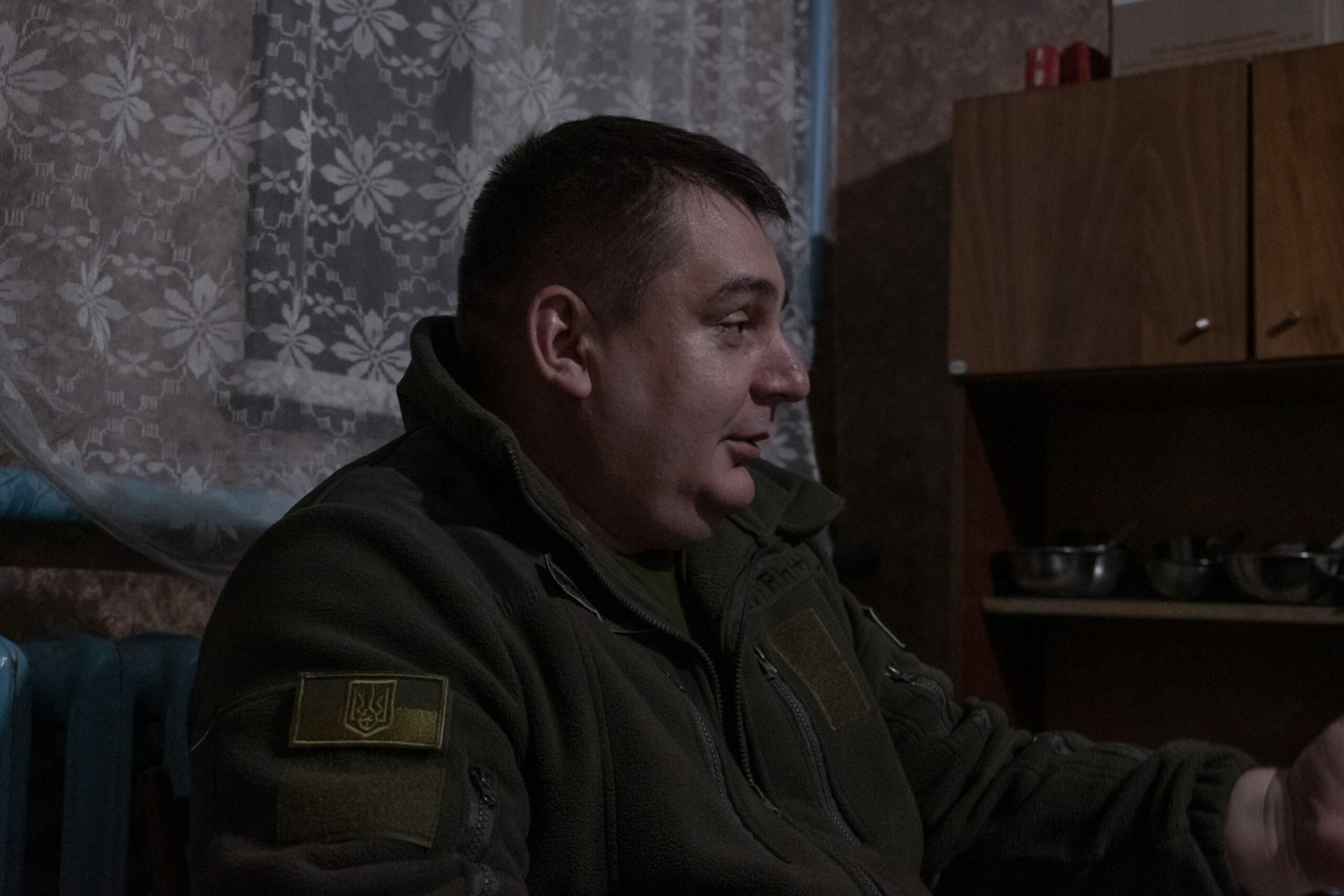
In Yelyzavetivka, a village where the sound of explosions is almost constant, we’re talking to some soldiers when a makeshift two-wheeled tractor putters down the street with a couple perched on a trailer behind. Vasyl and Anna have lived here all their lives, and have two children at home. When asked why they haven’t left, their response is familiar: “Where would we go? We’ve nowhere to go.” They’ve heard the stories of how hard it is to rent a flat in Dnipro, or Lviv. Home, if noisy and sometimes lethal, seems better.
They know exactly how deadly it can be: strikes wounded her mother and sister, and killer her uncle. “It’s scary, of course,” says Anna. “We saw all this with our own eyes.”
She describes how the ambulance couldn’t take her mother to safety because its tyres were blown out and crew injured; how she saw her uncle’s body in the morgue. When asked about winter, they laugh and say there is “plenty of firewood”; soldiers bring them food and diesel, sweets for the kids. They’ll stick it out.
The road back from Donbas to Kharkiv is difficult. Two of the cities we pass through are hit with rockets just hours later, and once into the Izyum and Kharkiv regions the devastation resulting from the September counteroffensive makes some roads impassable; great chunks of the highway are simply missing. We creep along badly-shelled back roads, the small car lurching into the water-filled craters.
The scene in some places is apocalyptic: in Kamyanka, Kharkiv region, a settlement spread out along a steep-sided valley, not a single building remains intact. The bright red signs – MINES! – dot the roadside and an empty cluster bomb pod sticks out stark white against the sodden winter ground, 50 metres from the road. There are no people.
The Russian army’s Z sign is sprayed everywhere. In Kamyanka you can’t even imagine reconstruction; it seems beyond that.
It takes us hours to cover the last 50 miles, crawling along in the dark. We talk about the guys we spent two days with – Zhenya, Evgeniya, Andrei and the others. Ivanna admits that she sometimes tries to avoid getting to know the soldiers that she helps. It means more people to worry about – that twist of anxiety in your stomach when you hear of strikes in certain places. But now, she’s giving in. Friendship is inevitable – and worth it. She says: “We’re human, after all.”

Enjoy the convenience of having The Sunday Post delivered as a digital ePaper straight to your smartphone, tablet or computer.
Subscribe for only £5.49 a month and enjoy all the benefits of the printed paper as a digital replica.
Subscribe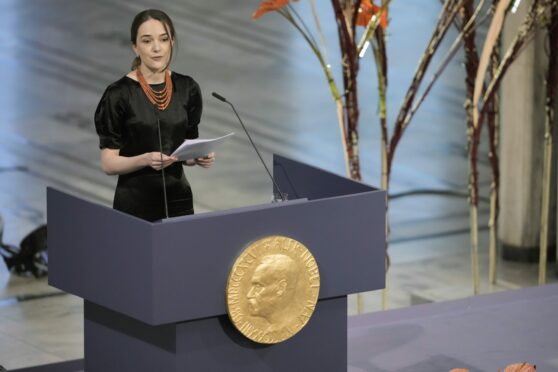
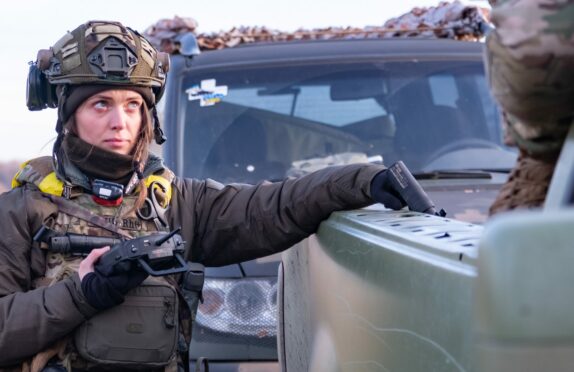

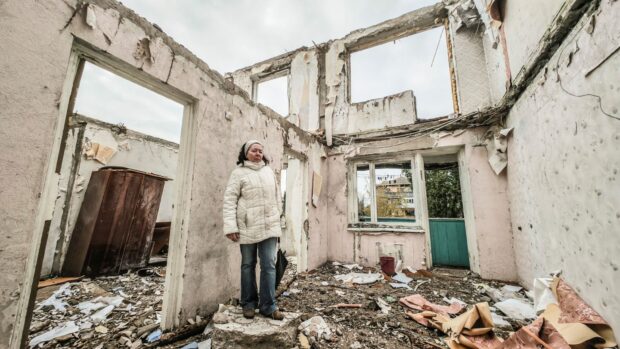
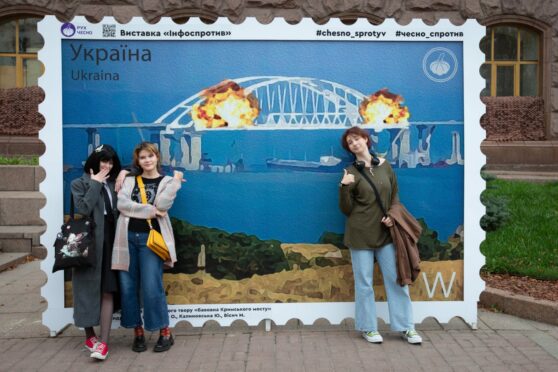
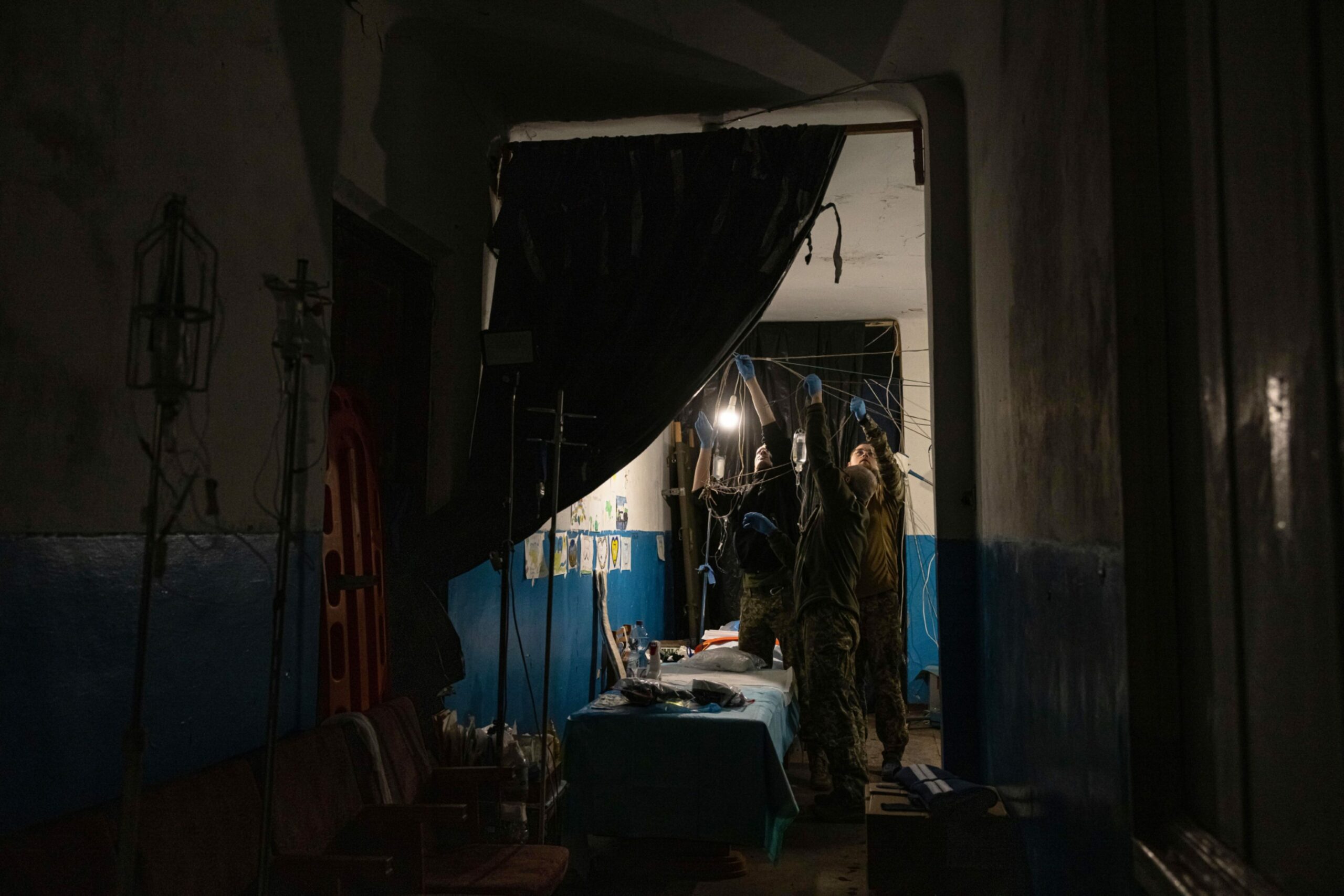 © ROMAN PILIPEY/EPA-EFE/Shuttersto
© ROMAN PILIPEY/EPA-EFE/Shuttersto